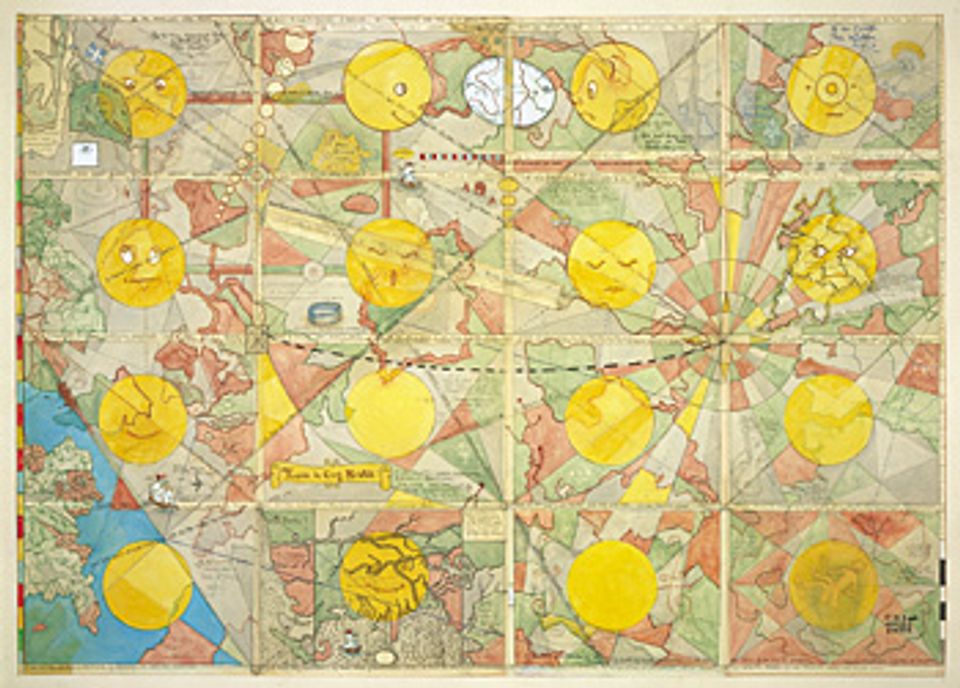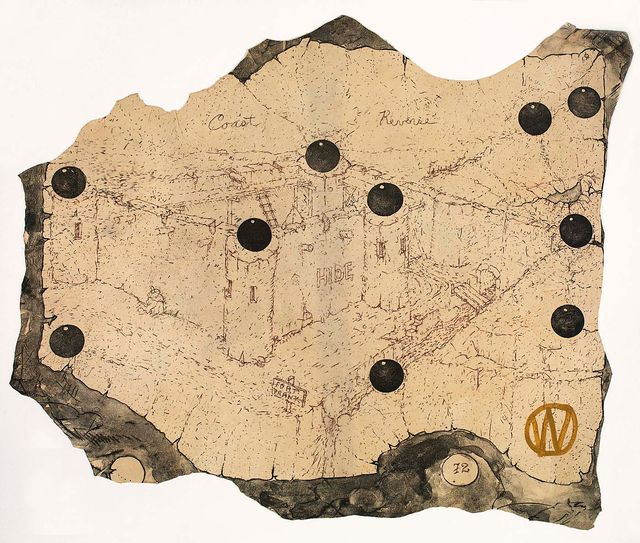What’s It All Mean: William T. Wiley in Retrospect

William T. Wiley, Meridian Moons Overwhatarewe, 2006, mixed media on canvas, 60 1/4 x 85 1/2 inches, Anonymous San Francisco Collectors. © William T. Wiley. Photography courtesy of John Berggruen Gallery, San Francisco, California. Photograph by John Wilson White
Enter the world of artist William T. Wiley, who has created a distinctive body of work during a 50-year career that addresses critical issues of our time. Art, politics, war, global warming, foolishness, ambition, hypocrisy, and irony are summoned by Wiley’s fertile imagination and recorded in the personal vocabulary of symbols, puns and images that fill his objects. His wit and sense of the absurd make his art accessible to all with multiple layers of meaning revealed through careful examination.
Description
This retrospective, which features eighty-eight works from the 1960s to the present, is the first full-scale look at Wiley’s long career and explores important themes and ideas expressed in his work. His work ranges from traditional drawing, watercolor, acrylic painting, sculpture, and printmaking to performances, constructions of assorted materials, and, more recently, printed pins, tapestries, and a pinball machine. Many artworks in the exhibition are on public display for the first time, and the installation includes several of Wiley’s avant-garde films of the 1970s, which are rarely screened.
Joann Moser, senior curator, organized the exhibition.
Visiting Information
Tour Schedule
Publications
Credit
Generous support for What’s It All Mean: William T. Wiley in Retrospect was provided by the Andy Warhol Foundation for the Visual Arts, the John and Maxine Belger Family Foundation, Gretchen and John Berggruen, Charles Cowles, the Cowles Charitable Trust, Sheila Duignan and Mike Wilkins, Electric Works, Sakurako and William Fisher, the Lipman Family Foundation, James and Marsha Mateyka, Arnold and Oriana McKinnon, Rita J. Pynoos, Betty and Jack Schafer, Laura and Joe Sweeney, Roselyne C. Swig, and the Tides Foundation: Art 4 Moore Fund. The exhibition is organized and circulated by the Smithsonian American Art Museum. The C.F. Foundation in Atlanta supports the museum's traveling exhibition program, Treasures to Go.
Podcast
Listen to "What's It All Mean: William T. Wiley in Retrospect” on iTunes U for free.















